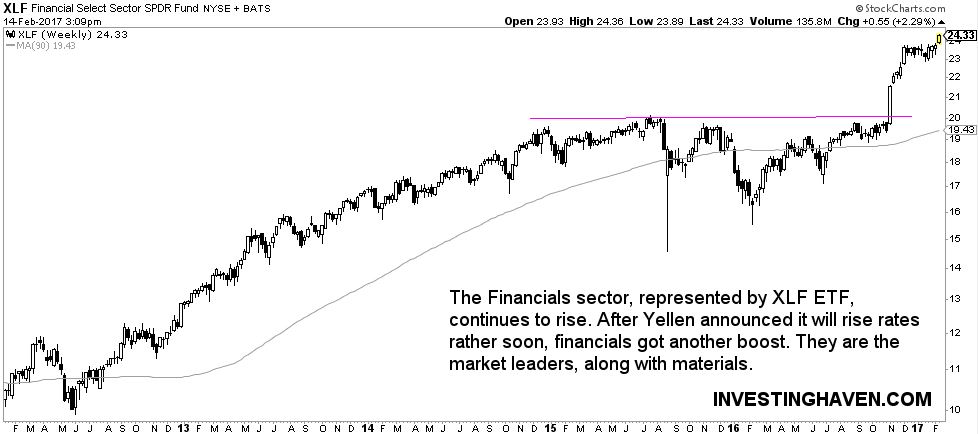The stock market hits another all-time high today. The S&P 500 touched 2335 points, the Dow Jones Index hit 20440 points, the Nasdaq 5270 and the Russell 2000 topped at 1396.
Stock markets are on the rise, and Yellen only fueled the rally with today’s speech. As MarketWatch notes, “the Federal Reserve Chairwoman Janet Yellen on Tuesday left open the possibility of an interest-rate increase as early as the central bank’s next policy meeting in March.”
Stocks reacted positive on the news of an upcoming rate hike. That is probably due to the fact that rising rates reflect a stronger economy. It does not matter how crazy that idea may sound, certainly after massive monetary stimulus and historically lower interest rates (read: market interventions), but it simply is what it is.
InvestingHaven’s analyst wrote recently that 5 Leading Markets Are At Major Inflection Point, and, consequently, something is brewing. It seems that stocks are among the winners, and, probably, gold will become one of the losers in the coming months.
The outperforming stock market sectors are materials and financials. InvestingHaven discussed that the materials stock market sector is an outperformer in 2017. Financials are doing great as well, and are leading stocks higher today. That is because rising rates are good for the financial sector (banks, insurance companies, and the likes), so there is a direct and positive correlation between rising rates and financial stocks.
InvestingHaven’s research team forecasted already 4 months back that financial stocks would be outperformers in 2017. That was another spot-on call, as seen on the chart below it was right before the huge breakout.
The stock market is in momentum, financial and material stocks are the key sectors driving stock markets higher. The higher the stock market goes, the closer we get to a major top. We are not bearish yet, but we want to warn readers that too much bullishness is the ideal ground for a new bear market. We are not there yet, but readers should prepare themselves, and avoid the mass-psychology trap.



